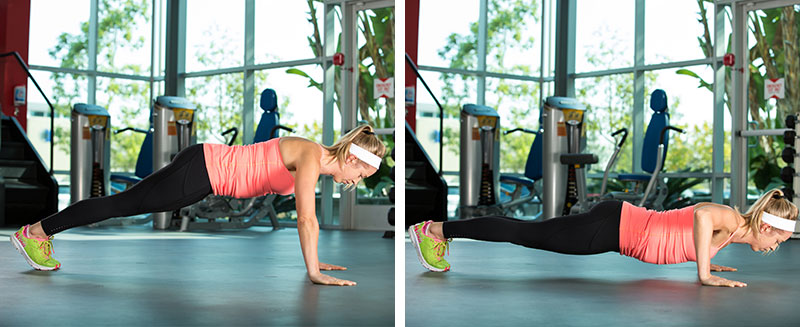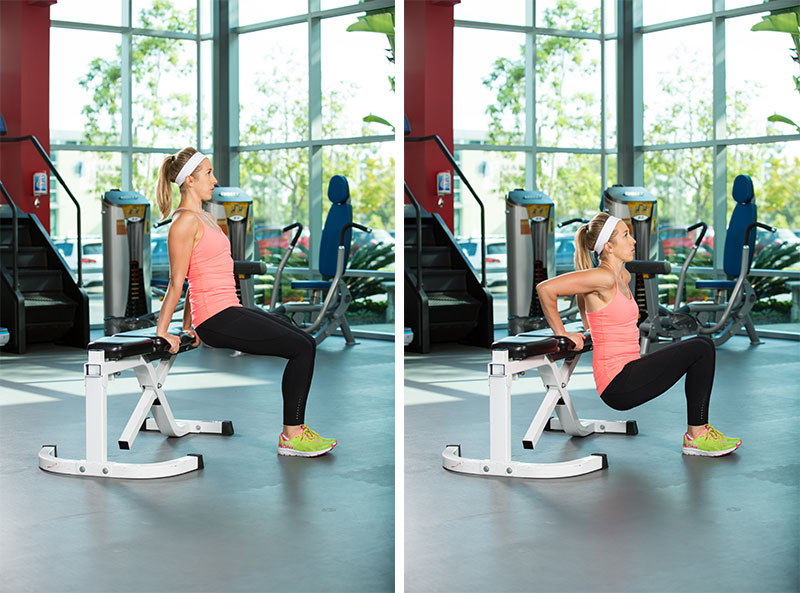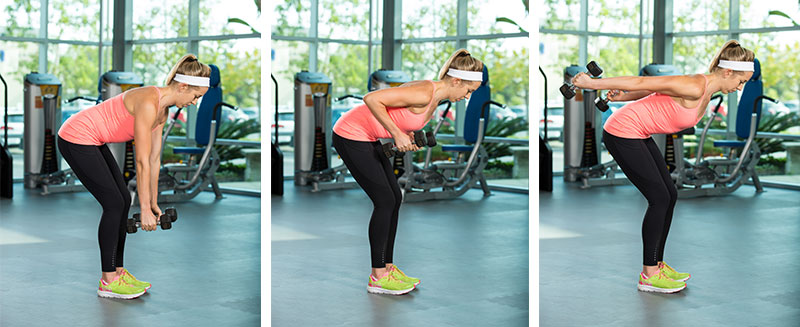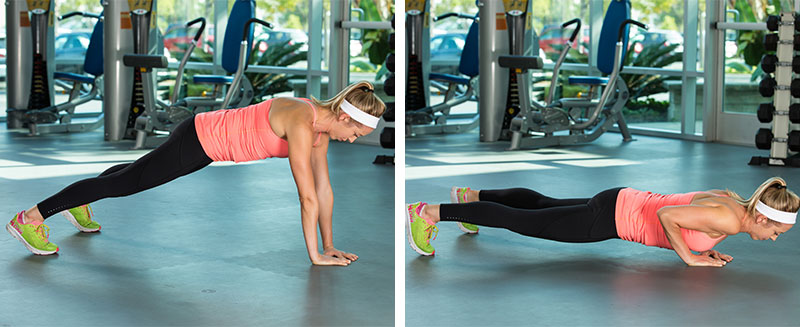|
Blog |
|
Tuesday, October 17 2017
The concept behind AMRAP, and why it’s so effective, is that you do as many rounds of a given set of exercises for a specific amount of time. This style of workout is perfect for days when you don’t have a lot of extra time, because it allows you to work your muscles to failure. A 2016 study found that, while not essential to increasing muscle and strength mass, training to failure can be a useful way to build strength. There’s just one caveat: Training to fatigue can quickly lead to overtraining, increasing your risk of burnout and injury. In other words, don’t train to fatigue every single day. Space out these types of workouts so that your body has a sufficient amount of time to rest and recover in between each one (usually 48 to 72 hours). For this AMRAP total arm burnout, the training time is 10 minutes. Complete 10 reps of each of the following exercises, with 30 seconds of rest between each round.
Wide Push-upsPrimary muscles used: pectoralis (chest), anterior deltoid (shoulder and triceps)Assume a plank position, with your toes on the floor, feet shoulder-width apart and hands a little wider than the shoulders. Brace the core, activate the quad muscles and slowly lower the body down until the elbows are at a 90-degree angle. Push the entire body up, staying stiff as a board, to complete one rep. Don’t let the hips sag and avoid pushing the upper body up first. Modify: Drop to the knees.
Triceps DipsPrimary muscles used: triceps, pectoralisSit on a bench and place the hands close to your sides, fingers facing forward. Kick the feet in front of you, so you’re resting on your heels, and scoot your hips off the edge, keeping your wrists directly below your shoulders (leaning forward will cause you to work your shoulders, not your triceps). Slowly lower your body down, making sure the elbows shoot straight back behind the body, not out to the sides. Raise back up and squeeze your triceps at the top to complete one rep. Modify: Keep the feet close to your body and knees bent at a 90-degree angle.
Lateral BoxesPrimary muscles used: trapezius, anterior and lateral deltoidGrab a set of 2- or 5-pound dumbbells if you are a relatively new exerciser. You can increase weight once you learn the movement. Hold a dumbbell in each hand at your sides, palms facing in. Stand with the feet hip-width apart, drop the shoulders down and back, and raise the arms straight out to the side. Once at shoulder height, keep the palms facing down and bring the hands toward one another to meet in the middle, in front of your body. Lower them down so the arms are resting against the front of your body. Raise them straight back up to shoulder height, back out to your sides and finally down to the starting spot to complete one rep.
Triceps Swing BacksPrimary muscles used: tricepsGrab a set of 5- or 8-pound dumbbells if this exercise is new to you. Increase the amount of weight once you learn the movement and build strength. Hinge at the hips so that the chest is facing the floor; keep your back flat. Let the arms hang down below your body and slowly raise them behind your back. Slowly lower them back down to the starting position to complete one rep.
Biceps Curl and Shoulder PressPrimary muscles used: biceps, deltoidsGrab a set of 5- or 10-pound dumbbells if this exercise is new to you (again, increase the weight as you become more comfortable with the exercise). Start with a dumbbell in each hand, arms hanging at your sides and palms facing away from your body. Keep the elbows in close to your body and use the biceps to bring the dumbbells to shoulder height. Swing your arms out so the palms are now facing forward, with the elbows at a 90-degree angle and the dumbbells next to your ears. Raise both hands straight up above your head, and then lower back down to starting position to complete one rep.
Triangle PushupsPrimary muscles used: triceps, deltoidsGet into a pushup position with your feet shoulder-width apart, and place your hands directly below your face with your index fingers and thumbs forming a triangle. Contract your core and activate your quad muscles, and slowly lower your body down until your elbows reach a 90-degree angle. Push your whole body back up, ensuring that your core is engaged to avoid sagging in the hips. Modification: Lower the knees to the ground
Jessica Thiefels Contributor, ACE Certified Personal Trainer, who specializes in HIIT and circuit training. |








